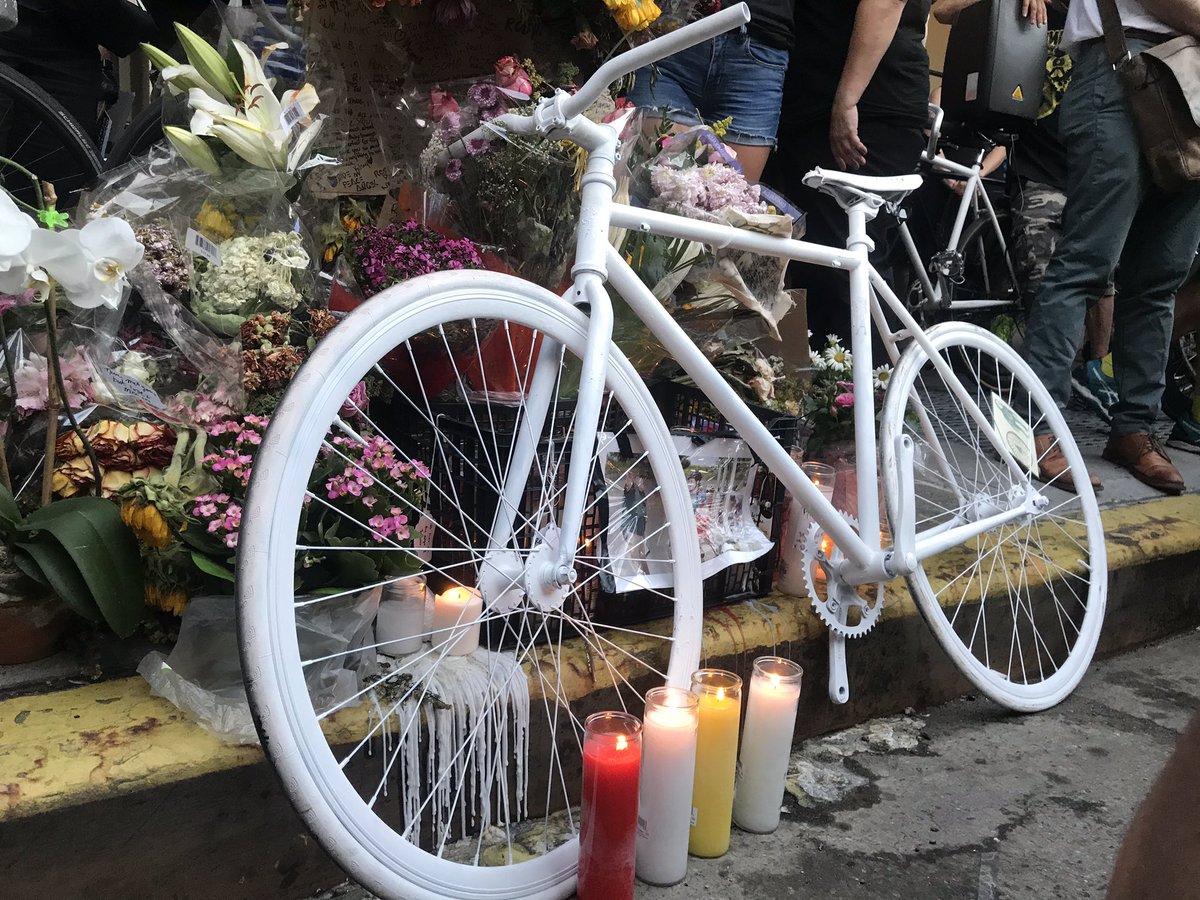Last year marked the second deadliest for traffic violence during Mayor de Blasio’s seven years in office, when at least 243 people were killed on the streets of New York City, including 26 cyclists — many of whom were the essential workers that kept the rest of New York healthy, safe, and fed throughout the COVID-19 crisis.
But the de Blasio administration failed to protect those riders, especially in neighborhoods that have historically been neglected and underinvested in for street-safety improvements — and as a result, more than half of the 26 cyclists killed last year died on streets where the median income falls below the citywide average.
"Despite Mayor de Blasio’s efforts to make New York the fairest big city in America, people are dying most in the neighborhoods where Mayor de Blasio has done the least,” said Marco Conner DiAquoi, deputy director of Transportation Alternatives. “Mayor de Blasio must implement much-needed improvements on our streets and prioritize neighborhoods that historically haven't received their fair share of street safety investments, like protected bike lanes.”
The average median household income of the streets where 24 out of the 26 cyclists were killed (excluding one that took place inside a park, and another on a bridge) is $59,479 — $1,283 less than the citywide average of $60,762, according to census data.
Ten of the 26 cyclist fatalities last year occurred on streets where the median income falls below $45,000, and eight of them happened in the Bronx — where the median income is $38,085, the poorest of the five boroughs that has long been overlooked for infrastructure upgrades.
“More and more cyclists are dying in the Bronx, and Mayor de Blasio has not stepped up to save lives,” TransAlt Executive Director Danny Harris said earlier this month, after the first cyclist of 2021 was killed in the Bronx." “[The] cyclist died on a stretch of road with four lanes of traffic and zero bike lanes. This death was the predictable and preventable result of the inequitable distribution of lifesaving cycling infrastructure.”
And not only did these bikers die on streets that are poorer than much of the rest of the city, they also lived in areas that were lower-income. The median incomes of the residence neighborhoods of the 24 dead cyclists whose addresses are known average out to $56,787 — about $4,000 less than the citywide average.
By comparison, the median income amongst car owners in the city is $85,000, according to census data crunched by the Tri-State Transportation Campaign in 2015.
Who drives cars & who gets hit by cars: https://t.co/WxeZb5m4Vm pic.twitter.com/9rrqV5gWKW
— Adrian Pietrzak (@zoningwonk) January 22, 2021
The 24 cyclists whose addresses are known excludes 22-year-old Micheal Basurto Larino, who police say was homeless; he was killed by a tractor trailer at Bruckner Boulevard and Brown Place on Nov. 5; and 41-year-old Pedro Lopez, whose address provided by police was inaccurate; he was killed by a truck driver making an illegal U-turn on Vandervoort Avenue in Bushwick on Jan. 30.
Six of the 24 dead cyclists whose addresses are known lived in areas where the median income is about $35,000 or less, according to city data.
And among those essential workers killed last year was 37-year-old Victorio Hilario Guzman, who worked as a food delivery cyclist and was killed by a hit-and-run driver during a delivery on Grand Concourse and East 180th Street on Sept. 23.
His brother, Elias Hilario, told Streetsblog that the mayor is not doing enough to protect people like his brother, trying to make a living on his bike.
“The city is not doing enough,” Hilario said through a translator, referencing the 14 additional cyclists, including several delivery workers, who were also killed after his brother.
The two brothers moved at separate times to New York from Mexico in the early 2000s. They both had started working at a deli in the Bronx, and then another in Manhattan, where they started making deliveries by bike. Hilario said his brother then got fired in 2019 and started working for a delivery app called Relay.
Hilario is also a delivery worker and said he gets around the city only by bike because he does not have a license here. He said he gets frustrated whenever he sees unprotected bike lanes filled with illegally parked cars — which he sees often.
“The bike lanes are blocked constantly and there's no enforcement from police,” he said, specifically mentioning the Grand Concourse, where his brother was killed.
Hilario wants to use his brother’s death to help other delivery workers, and to fight for street safety for all — he is organizing a vigil, four months after his brother’s death without any justice, on Jan. 23 at the intersection where he was killed.
Yet, the city has shown it can invest in street-safety when and where it wants to — in wealthier neighborhoods. On blocks that were part of the city’s Open Streets program — which was created to provide New Yorkers space for socially distanced recreation throughout the pandemic — the median income average was $81,567, according to Census data analyzed by Streetsblog.
Vigil for Victorio Hilario Guzmán at Grand Concourse and East 180th Street on Saturday, Jan. 23 at 5 pm.






